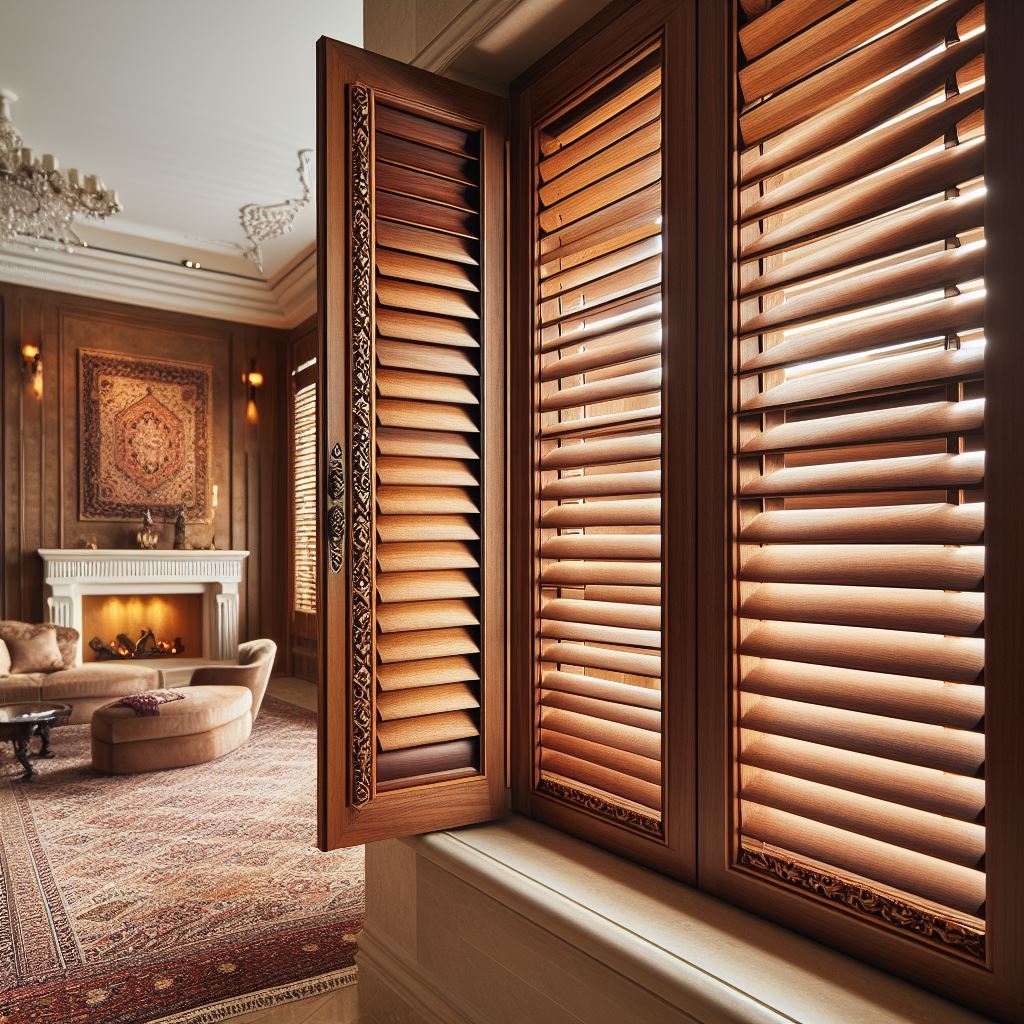As a homeowner, you are always looking for ways to increase your property value while enhancing its curb appeal and livability. One easy way to accomplish all three goals is by installing wood window shutters. These beautiful yet highly functional accents have been used for centuries to regulate light, increase privacy, and boost aesthetic appeal. Today, wood shutters remain a timeless choice that can transform the look and feel of any space.
Whether you prefer the rustic charm of natural wood tones or a crisp, bright white, wood shutters offer a range of styles to match your home’s architecture and your personal tastes. Unlike curtains that simply cover windows, wood shutters actually frame them, drawing the eye to one of the most attractive features of any room. At the same time, wood shutters provide excellent light control and insulation. By opening and closing each individual slat, you can easily adjust lighting and privacy to your exact needs and preferences.
An investment in high-quality wood shutters from a reputable manufacturer is one that will pay dividends for years to come. Not only will you enjoy their beauty and practicality, but you will significantly increase your home’s curb appeal and resale value. For a timeless accent that is both decorative and highly useful, wood window shutters are an unbeatable choice.
Choosing the Right Wood for Your Shutters
Wood window shutters offer an attractive and customizable solution for controlling light and privacy in your home. Their classic style provides architectural detail that enhances the appearance of both traditional and modern spaces.
Wood shutters come in a variety of materials, the most common being basswood, poplar, and maple. Basswood is an excellent choice for paint-grade shutters, as it accepts and holds paint very well. Poplar and maple provide a beautiful grain for stain-grade applications. These hardwoods are durable and help insulate windows, reducing heat loss in winter and heat gain in summer.
The louvers, or slats, of wood shutters can be adjusted to control light and ventilation. Open louvers wide to let in fresh air and sunlight. Tilt louvers up to block sunlight while still allowing for airflow. Close louvers completely for privacy and blackout conditions.
You have options for the panel style, louver size, stain or paint color, and hardware to customize wood shutters to your needs and home’s décor. Panels can be made in single-hung, double-hung, sliding, bi-fold, or fixed styles. Louvers come in sizes from 2 to 4.5 inches wide. And a variety of decorative hinges, pulls, and knobs are available to complete the look.
With so many choices, wood window shutters provide an elegant and versatile design accent that will enhance your living space for years to come. Their natural insulation properties and adjustable louvers make them a functional choice for comfort and privacy as well. For beauty, performance, and customization, wood window shutters are a superior option.
Installing and Caring for Your New Wood Window Shutters
When choosing wood for your plantation shutters, consider both appearance and durability. The most common woods are:
Basswood
Basswood is an affordable, lightweight option. It has a fine, even grain and pale color that takes stains well. However, it is a softer wood and can dent or scratch more easily. Basswood shutters may require more frequent repairs or refinishing.
Pine
Pine is another budget-friendly choice and has a rustic, casual appearance. Heart pine and southern yellow pine have attractive reddish tones and tight grain. While pine is more durable than basswood, it is still relatively soft. Pine shutters typically only last 10-15 years before needing refinishing.
Mahogany
Mahogany produces a beautiful rich, reddish wood with a distinctive grain pattern. It is a high-quality, durable hardwood that can last 40 years or more with minimal maintenance. However, mahogany shutters tend to be the most expensive option.
Teak
Teak is one of the most durable and weather-resistant woods. It has a tight grain and oily surface that protects against damage. Teak shutters can last 50 years and require no chemical treatments. Though high in quality, teak tends to be very expensive.
In the end, you must weigh the pros and cons of different wood types based on your needs and budget. The right choice comes down to finding wood shutters that complement your home’s style while standing the test of time. With the proper care and maintenance, high-quality wood shutters can provide a lifetime of beauty and functionality.


